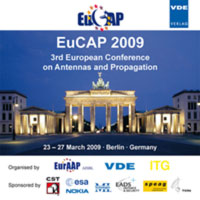Radar Signature Reduction of Wind Turbines through the Application of Stealth Technology
Konferenz: EuCAP 2009 - 3rd European Conference on Antennas and Propagation
23.03.2009 - 27.03.2009 in Berlin, Germany
Tagungsband: EuCAP 2009
Seiten: 5Sprache: EnglischTyp: PDF
Persönliche VDE-Mitglieder erhalten auf diesen Artikel 10% Rabatt
Autoren:
Pinto, J.; Matthews, J. C. G.; Sarno, C. (Sensor Systems Department,BAE SYSTEMS Advanced Technology Centre, West Hanningfield Road, Gt. Baddow, Chelmsford, Essex, UK, CM2 8HN)
Inhalt:
Currently, a large proportion of proposed UK wind farms, and an increasing fraction of continental European wind farm projects, have either concerns raised at the pre-planning stages or formal planning objections made by radar operators on the basis of the potential of wind turbines to cause radar interference. The impact of wind farms, particularly on ground based aviation radars such as those operated for air defence and military and civil air traffic control purposes is likely to become particularly acute as EU member governments strive to meet the requirements for energy generation under the Renewables Obligation. In addition, the increasing number of offshore wind farm projects proposed has the potential to cause interference to marine radars such as coastal vessel traffic services (VTS) and those on-board vessels for navigational purposes. A number of technologies are being pursued to assist in mitigating the impact of wind turbines on both aviation and marine radars. These include additional post-processing of radar returns, the use of gap filler radars to improve coverage, physical obscuration to remove radar-wind farm line of sight, antenna tilting or modification to ensure that wind farms are not illuminated by elevation side lobes, and the lay-out of wind turbines within a farm to reduce coherent summation of returns for radars at fixed locations. The application of so called ‘stealth’ technology has the potential to reduce both aviation and marine radar interference and it is work in this area on which this paper reports.


